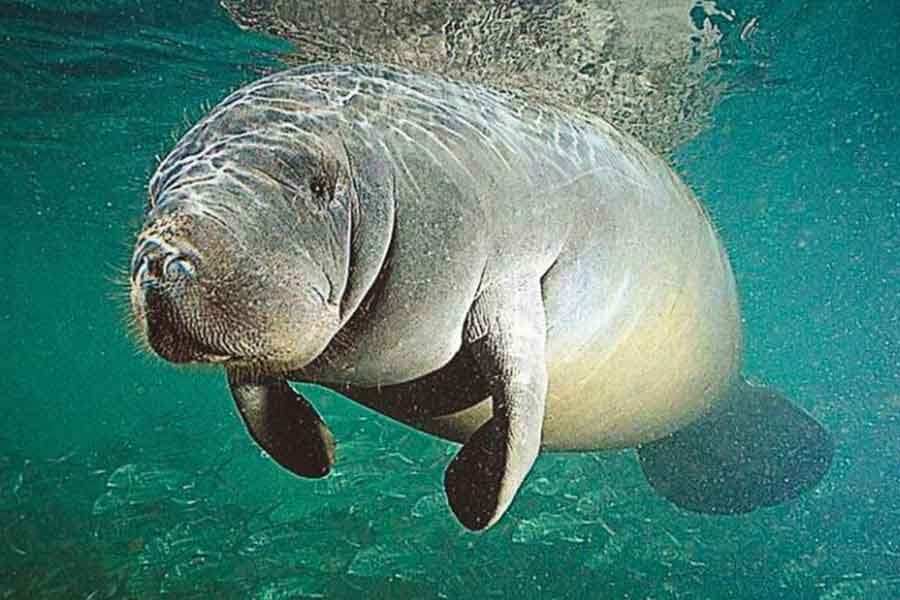
When the first navigators arrived in America, they found its coasts teeming with manatees. Seen from a distance, with a certain longing and fantasy, they quickly mistook them for mermaids, hence their name of sirenians. Even Christopher Columbus described in his ship’s journal his encounter with three mermaids, mentioning that «they are not as beautiful as sailors describe them.»
For many years, these gentle animals were hunted for their abundant meat and fat. Their bodies can reach up to three meters in length, and they weigh between 300 to 500 kg. Today, they are restricted to only three populations in the world, with few individuals: the Niger River population in Africa, the Amazon population in Brazil, and the Crystal River population in Florida. They seem to prefer the freshwater of estuaries near the sea, although in the past they have been seen along coastal areas and even traveling from one island to another in the Caribbean Sea.
Manatees are primarily herbivores and feed on plants found on the seafloor, consuming about 8 to 15% of their body weight daily. They spend eight to ten hours a day feeding, which is why it is common to see them chewing on plants that protrude from their mouths. They are not ruminants like other mammals, but their 45-meter-long intestine allows them to absorb a large volume of digested food. To conserve energy, they move at an extremely slow pace, which currently poses problems with propeller strikes that can cause injuries or fatalities. They are sociable and friendly animals, displaying cordial behavior when encountering other individuals, sniffing and even caressing each other with their front flippers. They react similarly to humans, often displaying curiosity and allowing divers to interact with them, even allowing divers to stroke their calves.
With their gentle and trusting nature, harmless behavior, slow movements, low reproductive rate, and tasty and abundant meat, these endearing animals possess characteristics that seem at odds with survival in the modern world. While they are no longer hunted today, their deaths are caused by human activities such as changes in river courses, pollution, and collisions with boat propellers. In Florida, the population is declining at a rate of 10% per year. There are concerns that the few remaining individuals in the world may not allow for the necessary genetic exchange to sustain the species for much longer.
«One cannot defend what one does not love, and one cannot love what one does not know.»

